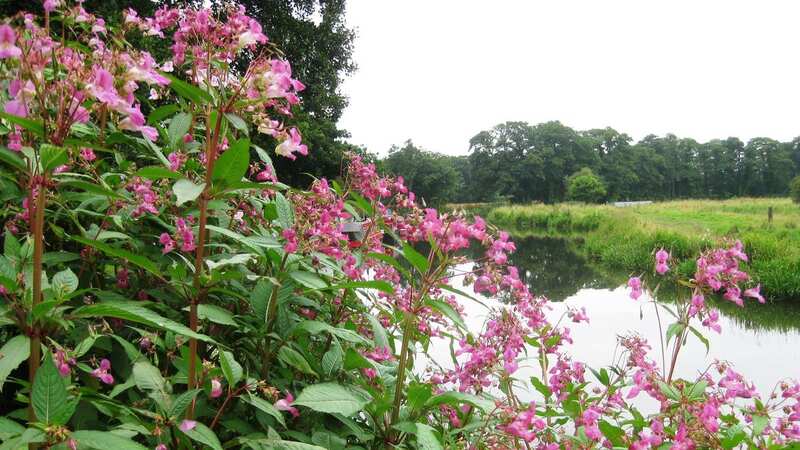Beautiful plant that's illegal to let grow outside your garden 'spreads quickly'

Its flowers are really quite beautiful but there's a plant that is classed as a weed and is dangerous to others that may be in your garden.
Looks can be deceiving and no more than in the case of one plant which produces pretty pink-purple flowers but that spreads rapidly and poses a serious threat to the UK's native species, making it illegal to allow it to grow in the wild.
The Himalayan Balsam is a non-native weed from the Himalayas and probably due to its attractive buds was introduced to the UK as a garden plant in 1839. However it spread ferociously into the countryside, dominating our native plants, which have important ecological benefits to certain species of insects.
 The plant has pretty pink-purple flowers (Manchester Evening News)
The plant has pretty pink-purple flowers (Manchester Evening News)Bees love the flowers and it's thought because of this, other plants may receive less pollination. It produces a huge amount of exploding seed pods that, according to Gardeners World can disperse up to 800 seeds per plant, aiding its vigorous spread further.
The seeds can land in moving water up to four metres from the parent plant and the weed is often found along the banks of canals and waterways where it grows in dense patches. It can also grow in low light levels and up to a height of 2.5 metres, making it the tallest annual plant in the UK.
 'I don't want children staying up late at weekends - I really need adult time'
'I don't want children staying up late at weekends - I really need adult time'
Ecologists believe it is a major problem because it out-competes our plants so easily. In some areas of the countryside it has destroyed the ecological balance completely and therefore is listed on Schedule 9 of the Wildlife and Countryside Act in England and Wales. This makes it an offence to plant or cause it to grow in the wild.
 Bees love the Himalayan Balsam (Manchester Evening News)
Bees love the Himalayan Balsam (Manchester Evening News)Although it is not illegal to have the weed in your garden, it is not advisable as it's virtually impossible to stop it spreading further and out into the wild.
It's easy to spot if you have it in your outside area thanks to its height. Its flowers, which bloom from July to October, are also distinguishable by their size and pink-purple colour. The leaves are light green with a red tip and the stems are reddish in colour too.
Thankfully it's relatively simple to remove because of its shallow root system. It's important not to allow it to seed so pull it up before then, checking back regularly for any new seedlings. Strimming is possible providing it hasn't seeded as that will help to spread it further.
Within three years it should have been eradicated completely in this way. If seed pods are visible, the material should be burned, otherwise it can be composted.
Do you have Himalayan Balsam in your garden? Let us know in the comments below.
Read more similar news:
Comments:
comments powered by Disqus

































